|
Safe for Space: |
|
|
Scientists Explore Ways To Grow Food for Astronauts |
|
|
Agricultural Research Service (ARS) scientists are working to help the National Aeronautics and Space Administration (NASA) prepare for human missions to the moon--or maybe even Mars. |
|
|
|
|
|
If space explorers are going to stay there a long time, they'll have to grow their own food. That's because resupplying them with food from Earth would be too expensive and difficult. |
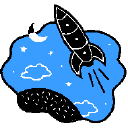 |
|
NASA calls all the things they'd need to survive "life support systems." NASA scientists want to use what we have here on Earth to help humans live in space or on the moon or Mars. NASA sees plants as an important part of these life support systems. |
|
|
When grown hydroponically (in water instead of soil), plants could help purify "gray" water, or water that astronauts wash with, says Anabelle Matos. She is a microbiologist at ARS' Eastern Regional Research Center in Wyndmoor, Pennsylvania. But plants also can be home to lots of invisible pathogens. These are bacteria and other microorganisms that could make astronauts sick. |
|
|
On Earth, competitive exclusion happens when one microbe species crowds another from a choice spot, resource, or habitat that both need to survive. As a result, the microbial "loser" is less able to survive, reproduce, and build its population at the site, explains Matos. She works in the ARS center's Food Safety Intervention Technologies Research Unit. |
|
|
On a moon base or mission to Mars, this could help make sure that food crops will keep space travelers well-nourished and fit for exploring--or returning home, for that matter.
|
Click here to find out what once happened when an astronaut became sick on a mission.
Click here to learn more about NASA's Advanced Life Support research project. |
|
By Jim Core, Agricultural Research Service, Information Staff Top / Back to |
|
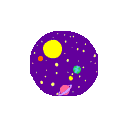
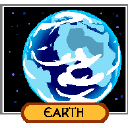
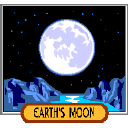
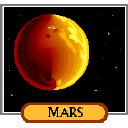
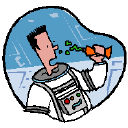
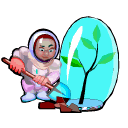 Just by doing what comes naturally, plants could help
the space missions in several ways. They could produce food, purify water, and
recycle carbon dioxide into oxygen.
Just by doing what comes naturally, plants could help
the space missions in several ways. They could produce food, purify water, and
recycle carbon dioxide into oxygen. 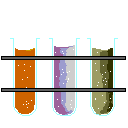
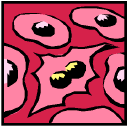 That's why Matos is exploring
the use of "competitive exclusion." This refers to using "good-guy" microbes to
fight "bad-guy" microbes, the pathogens that can make people--including space
travelers--sick.
That's why Matos is exploring
the use of "competitive exclusion." This refers to using "good-guy" microbes to
fight "bad-guy" microbes, the pathogens that can make people--including space
travelers--sick. 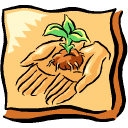 Matos thinks it's possible to develop treatments of good-guy
microbes that could stop certain pathogens like Salmonella,
Pseudomonas aeruginosa, and E. coli 0157:H7 from growing on
food.
Matos thinks it's possible to develop treatments of good-guy
microbes that could stop certain pathogens like Salmonella,
Pseudomonas aeruginosa, and E. coli 0157:H7 from growing on
food.

